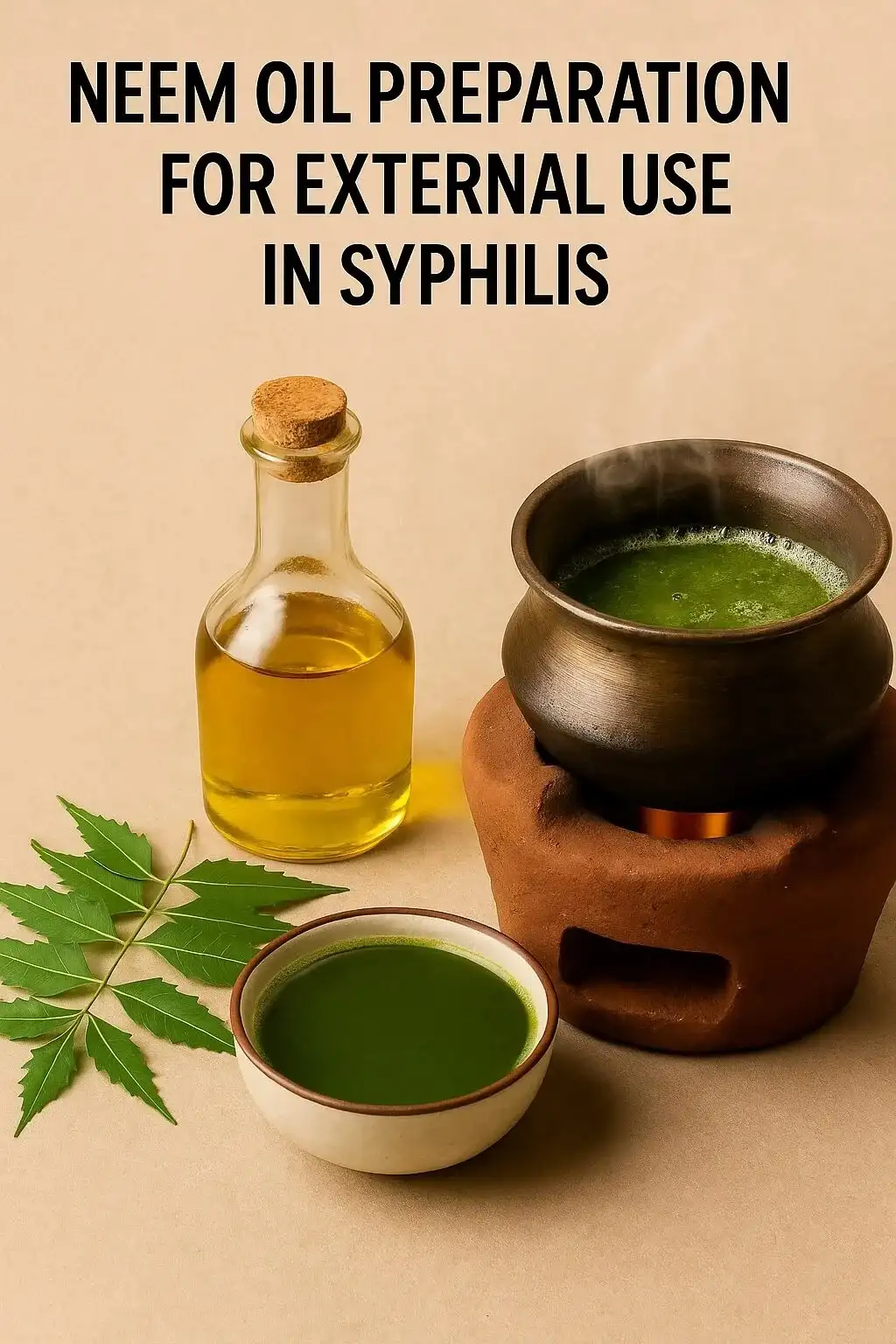Understanding Syphilis in Ayurveda
Syphilis is a sexually transmitted infection that was introduced into India a few centuries ago, likely from Europe. Though its origin is debated, some traditions link its transmission to contact with infected animals like dogs. In Ayurveda, syphilis is categorized according to the three doshas—Vata, Pitta, and Kapha—and also as Tridoshaja when all three doshas are involved.
Symptoms of Syphilis
Stage 1: Early Symptoms
- Appearance of chancres (hardened sores), primarily on the genital organs.
- Typically, there is no pus or fluid discharge.
- Groin swelling (chancroid) may follow, which is often misdiagnosed.
- Chancres usually heal on their own, leading many to ignore early warning signs.
Stage 2: Advanced Symptoms
As the disease progresses, it manifests differently based on the affected dosha:
Vata Syphilis
- Black sores, piercing pain, throbbing and twitching.
Pitta Syphilis
- Yellow, ugly sores with a sharp burning sensation.
Kapha Syphilis
- White mucus-like discharge, large sores, intense itching.
Blood Syphilis
- Coppery/red sores with reddish secretion.
Tridoshaja Syphilis
- Combination of all the above symptoms in varying degrees.
Difference Between Syphilis and Chancroid
While syphilis and chancroid share similarities, they are caused by different bacteria:
- Syphilis: Treponema pallidum (Spirillum pallida)
- Chancroid: Bacillus ducre
Chancroid symptoms are more localized to groin swelling and genital ulcers, while syphilis can spread systemically.
Causes of Syphilis
- Poor hygiene of sexual organs
- Excessive or unprotected sexual activity
- Contact with infected individuals, including sharing clothes, food, or engaging in intercourse
- Most common among those involved in promiscuous lifestyles
Ayurvedic Treatment for Syphilis
Morning Yoga Routine
- Utkshepa Mudra
- Mayurasana
- Padahastasana
- Nasapana
- Shitali Kumbhaka
Evening Yoga Routine
- Sarvangasana
- Matsyamudra
- Naukasana
- Utkata Paschimottanasana
- Agnisara Mudra
Diet for Syphilis Patients
Avoid These:
- Non-vegetarian food
- Onion, garlic
- Spicy, sweet, or oily foods
- Milk (until recovery)
Recommended:
- Ghee-mixed rice for lunch
- Roti, fruits, roots, and vegetable soup for dinner
- Alkaline and ghee-prepared foods
- Ample water intake
Lifestyle Guidelines (Dos and Don’ts)
- Take daily sun-baths exposing affected areas
- Wash sores with neem juice or herbal disinfectants
- Apply neem oil after cleaning sores
- Use red ochre (girimáti) packs covered with a moist cloth for detox
- Fasting on Ekadashi, Purnima, and Amavasya is recommended
- No day-sleeping, night-waking, or crowded mingling
- Avoid marriage or sexual activity for 1.5 to 2 years post-recovery
- Strictly avoid alcohol and intoxicants
Natural Remedies for Syphilis and Chancroid
A. For Chancroid
- Lime paste + raw sugar/honey
- Cloth soaked in Apamarga leaf juice
- Bhunjichapa root paste
- Hatisunra leaves or bark ash in sesame oil
B. For Syphilis Sores
- Green areca nut paste
- White dhuna (resin) beaten with butter
- White oleander root paste
C. Destroying Syphilis Germs & Mercury Toxins
- 5 tolas Kuksima juice at dawn
- Juice of Kalmii tips or Black Basil (Tulsi) leaves
- Anantamula decoction in cow’s urine
- Apamarga root in green papaya to expel mercury and syphilis toxins
D. Treating Mercury Spots
- Buckidana paste in black cow urine
- Papaya and Bel leaf paste
E. Excellent Detox Process
- 1 drop of Trishirasiija juice in curd left overnight in a stone vessel
- Drink on an empty stomach
- Expect purgation; manage with barley-water and light diet
How to Prepare Neem Oil at Home
- Grind neem leaves and extract juice.
- Mix 1 part neem juice with ½ part sesame oil.
- Boil until reduced by half.
- Cool and store. Avoid overheating or burning.
Final Thoughts
Syphilis, though dangerous, can be effectively managed with Ayurvedic protocols, natural remedies, and lifestyle discipline. Early detection, proper cleansing, dietary restriction, and patience are essential. Always consult an Ayurvedic practitioner before starting any new treatment.
Get insights into diet and lifestyle for eczema control in Ayurveda.
Find out about Ayurvedic therapies for Gonorrhoea management.
“See more Ayurveda-based home remedies in our Remedy Blog.”
Frequently Asked Questions:-
Q1. What is syphilis?
Ans: Syphilis is a sexually transmitted infection (STI) caused by the bacterium Treponema pallidum. If untreated, it progresses through stages and can affect skin, nerves, and vital organs.
Q2. How does Ayurveda understand syphilis?
Ans: In Ayurveda, syphilis is considered under Upadamsa (genital sores) and Aupasargika Roga (contagious diseases). It arises due to aggravated Pitta and Rakta dosha, leading to ulcers, rashes, and systemic weakness.
Q3. What are the symptoms of syphilis?
Ans: Painful or painless genital sores (chancres)
Skin rashes or mucous patches
Fever, fatigue, and body pain
Hair loss in patches
In later stages, nerve and organ complications
Q4. Can syphilis be treated by Ayurveda?
Ans: Yes. Ayurveda focuses on purifying the blood, strengthening immunity, healing ulcers, and restoring balance of doshas. However, severe cases require combined management with modern medicine.
Q5. Which Ayurvedic herbs are useful in syphilis?
Ans: Neem (Azadirachta indica) – blood purifier, antibacterial
Guduchi (Tinospora cordifolia) – immunity booster
Manjistha (Rubia cordifolia) – detoxifies blood, heals skin lesions
Haridra (Curcuma longa / Turmeric) – anti-inflammatory and antimicrobial
Sariva (Hemidesmus indicus) – pacifies Pitta and purifies Rakta
Trusted External Resources
For more information on Ayurveda, yoga, and natural wellness, explore these authoritative resources:
